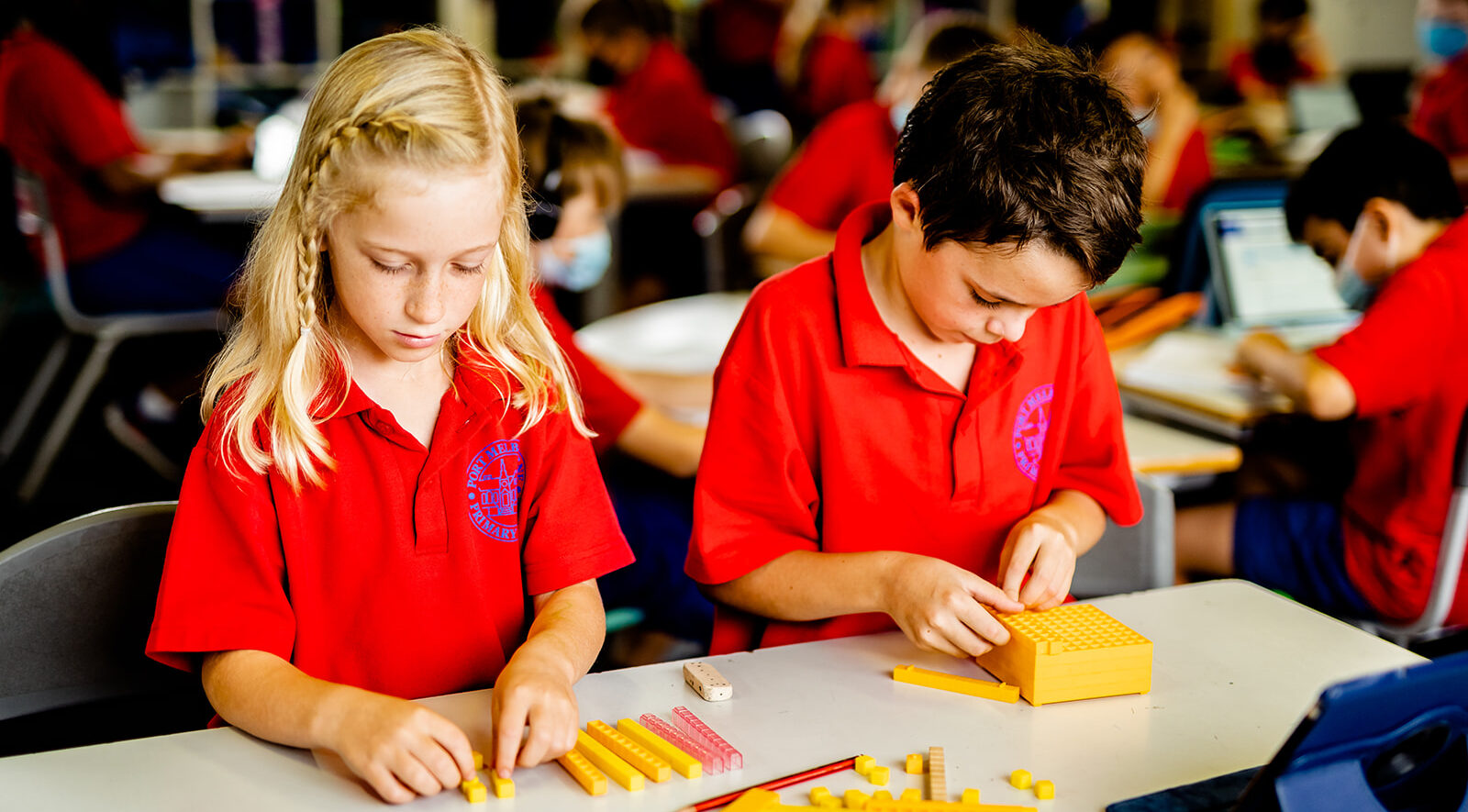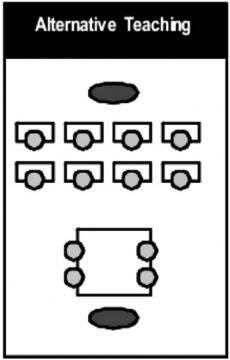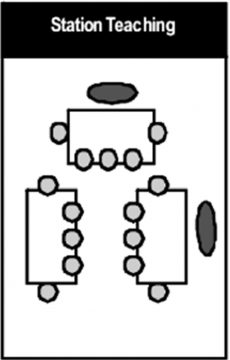Collaborative Excellence: Empowering Every Learner
Our teaching philosophy revolves around the power of collaboration and best-practice approaches. Weaving together co-teaching and explicit instruction our teaching model creates a learning environment that harnesses the collective expertise of our educators.
At Port Melbourne Primary School, our teachers are committed to explicit instruction, supported by a collaborative co-teaching model. With this approach, we craft a learning environment that encapsulates the breadth of our educators' expertise, ensuring every child is offered a rich and tailored learning experience.
Our commitment doesn't stop there. By integrating the best evidence-based teaching methods, we ensure that every student is engaged, challenged, and supported, fostering both academic and holistic growth. Together, we champion a shared vision of excellence, where every student is seen, heard, and empowered. Through dedication and teamwork, we set our students on an assured path of success, finely tuned for the ever-evolving world that awaits them.
Co-Teaching: Scaling Expertise and Amplifying Impact
At Port Melbourne Primary School, collaborative teaching (otherwise known as co-teaching) is utilised across teaching pairs/teams to meet the diverse needs of our students and provide quality teaching and enriched learning opportunities.
This approach to teaching complements the school’s commitment to collaboration and shared ownership via the Professional Learning Communities (PLC) model and our flexible, open-plan learning spaces. It is imperative that every student succeeds at our school regardless of his/her academic ability, learning style, social competence or level of emotional intelligence.
Working together assists our teachers to best facilitate this as opposed to working in isolation.
Quality teaching is not an individual accomplishment, it is the result of a collaborative culture that empowers teachers to team up to improve student learning beyond what any one of them can achieve alone… The idea that a single teacher, working alone, can know and do everything to meet the diverse learning needs of 30 students every day throughout the school year has rarely worked, and it certainly won’t meet the needs of learners in years to come.
(Carroll, 2009 cited in Dufour et al. 2010)


The Benefits
In addition to the work done through the Year Level Collaborative Team, both members of the teaching pair are responsible for differentiating the instructional planning and delivery, classroom management, assessment and providing feedback on student achievement.
When done effectively, two teachers in one dynamic learning space can enable:
- flexibility in differentiating instruction or tasks
- coverage of content more effectively to support mastery learning
- workshopping based on students’ needs and misconceptions
- increased understanding of all students’ needs
- greater collegial exchanges of strategies between professionals
- a guaranteed curriculum
- enhanced support during instruction and independent learning
- increased one-on-one student conferencing focussing on feedback/feedforward or goal setting
- a diverse range of knowledge, skills and problem solving strategies to be shared
- utilisation of each staff member’s skill sets
- diversity in learning styles to be addressed
- teachers to share different perspectives on topics and encourage critical thinking
- students to build social connections with a wider range of teachers and peers
- rich collaborative reflection by teachers about what is and isn’t working
- ‘on the job’ modelling and support for graduate teachers
Aren’t there too many kids in one room?
It's common for parents unfamiliar with a high functioning co-teaching model to ask how it works when two classes of students share a space. Our approach is meticulously designed to supporting the learning experience for each student by considering and optimising a range of factors including class sizes, structure and professional learning to do more with two teachers than is possible with one.
Structured Environment and Routines
- Consistent Framework: Our classrooms operate within a well-established framework of routines and structures, crucial for managing the dynamics of any classroom size.
- Seamless Transitions: The structured approach ensures smooth transitions between different activities and teaching styles, minimising disruptions and fostering a focused learning environment.
Professional Development and Coaching
- Ongoing Training: Teachers receive continual professional development and coaching in the co-teaching model, equipping them with the skills to efficiently manage and teach in our classroom settings.
- Collaborative Professional Growth: Regular training sessions encourage the sharing of experiences and strategies, further refining our teaching practices.
Individualised and Small Group Instruction
- Focused Attention: With co-teaching, teachers can provide more individualised attention, benefiting students by offering tailored instruction and support.
- Catering to Diverse Learning Styles: The presence of multiple educators allows for addressing a variety of learning styles simultaneously, ensuring all students are engaged and supported.
Additional Benefits
- Enhanced Student Engagement: More educators in the room translate to increased opportunities for student interaction and participation, leading to greater engagement and interest in learning.
- Rapid Response to Student Needs: The co-teaching format allows for quick identification and addressing of student needs, be they academic or emotional.
- Varied Expertise and Perspectives: Co-teaching brings together teachers with different specialities and teaching approaches, enriching the learning experience with diverse perspectives and methods.
Our co-teaching model at Port Melbourne Primary School provides a comprehensive approach to providing high-quality, personalised, and effective education to every student.
Collaborative Teaching/Co-Teaching Approaches

One teach, one assist (Supportive teaching): Describes the situation when one teacher takes the lead instructional role and the other roves to monitor and provide support on a one-to-one basis as required, often lending a voice to students or groups who would hesitate to participate or add comments.

Parallel teaching: Is when two or more teachers are working with different groups of learners simultaneously in different parts of the classroom. Teachers may choose to divide the group into mixed ability, like ability or based on student choice. Another benefit to this approach is the reduction of student to teacher ratio.

One Teach / One Observe: In this model, one teacher is primarily responsible for delivering instruction to the entire class. The other teacher is serving as an intentional observer. While observing, this teacher can observe and record student behaviour, student understanding, or even the teaching teacher’s style and behaviour.

Team / Complementary Teaching: Is when both teachers actively work together to deliver instruction to the same group of students at the same time, exhibiting an invisible flow. From a students’ perspective, there is no clearly defined leader – as both teachers share the instruction, are free to interject information, and available to assist students and answer questions. Alternatively Teacher A may do something to enhance the instruction such as paraphrasing or expanding on the other’s ideas, scribing students’ ideas on the whiteboard or model a specific skill while Teacher B leads.

Alternative (Differentiated) Teaching: When using this model, one of the teachers teaches the main lesson to the majority of the class. The second teacher works with a small group of students to either provide remedial help or to extend the lesson with more challenging material.

Station Teaching: Station teaching allows each teacher to work with smaller groups of students. The teachers divide the students into groups and create activities for the students to engage with the lesson material along with the assistance of a teacher. These stations can involve the teaching of new content, reinforcement of previously learned material, or challenging activities for students that are ready.

